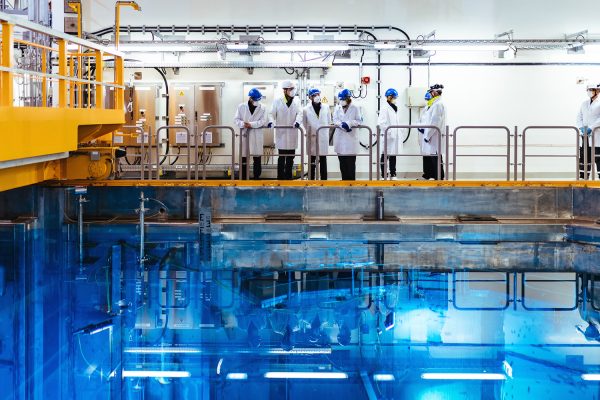
The European Commission has proposed to label nuclear power “green” in order to meet the bloc’s ambition to reduce greenhouse gas emissions to zero by 2050.
The EU taxonomy still needs to be approved by the European Parliament and member states, but it seems unlikely they will want to unwind a hard-won compromise.
Once approved, it should unleash private-sector investment in green industries.
In a concession to coal-dependent Germany, which is phasing out nuclear power, the taxonomy would also consider natural gas “green” until 2030.
Ten member states, including Belgium, Finland and France, had argued for including nuclear power. An eleventh, the Netherlands, just announced plans to phase out natural gas and build two more nuclear plants.
Arguments for
The EU taxonomy is not directly enforceable, but it will guide firms and regulators in deciding which activities and investments can be considered “green” or “sustainable”
The argument for including natural gas is that it is the least polluting fossil fuel, and helps countries “transition” away from coal and oil.
The case for including nuclear is stronger. It’s one of the cleanest forms of electricity generation. Nuclear plants emit zero greenhouse gasses. The environmental impact of nuclear power is negligible compared to the havoc wreaked on the planet by fossil fuels.
Arguments against
The arguments against labeling nuclear power “green” are:
- It’s not sustainable, because it requires a finite fuel (typically uranium); and
- It’s not clean, because it produces nuclear waste.
But nuclear requires so little fuel, and produces so little waste, that those arguments could be made against solar and wind as well.
Scarcity
Uranium is scarce, but it is also extremely powerful: a kilogram of uranium can generate two million times the energy as the same amount of oil.
At current prices, there is enough uranium to sustain nuclear power for a century. If demand, and prices, were to rise, more uranium could be recovered from difficult-to-reach places. By the time we reached peak uranium, thorium-based reactors could almost certainly take over. By that time we may have even mastered nuclear fusion, and this entire discussion will be moot.
Solar and wind leverage infinite sources of energy: the sun and the wind. But solar panels and wind turbines still need to be made out of something.
The dominant semiconducting material in solar panels is crystalline silicon; fairly abundant on Earth, and even more abundant in space, but still a finite material. Wind turbines contain aluminum and plastic, which are made out of bauxite and oil; two more finite substances. Yet few argue solar and wind power are not “sustainable”.
Waste
All the nuclear waste produced in the world so far could fit inside a single football stadium.
The latest nuclear reactors are able to recycle their waste as fuel until there is almost no waste left.
Nuclear power isn’t waste-free, but no form of energy is. The average solar panel needs to be replaced after 25 years. Old panels can be recycled, but they are often thrown away and shipped to developing countries with other thrash. When they are burned, it releases toxic fumes.
Wind turbines don’t last more than 25 years either. Aluminum tends to be recycled, because it is valuable, but plastic isn’t. Plastic is the world’s number-one waste problem. Wind turbines contain only a small amount of plastic (11-16 percent), but it’s a type of plastic that’s hard to recycle. When you add up all the plastic from millions of decommissioned wind turbines around the world, you might end up with, oh, I don’t know, a football stadium’s worth full of it?
